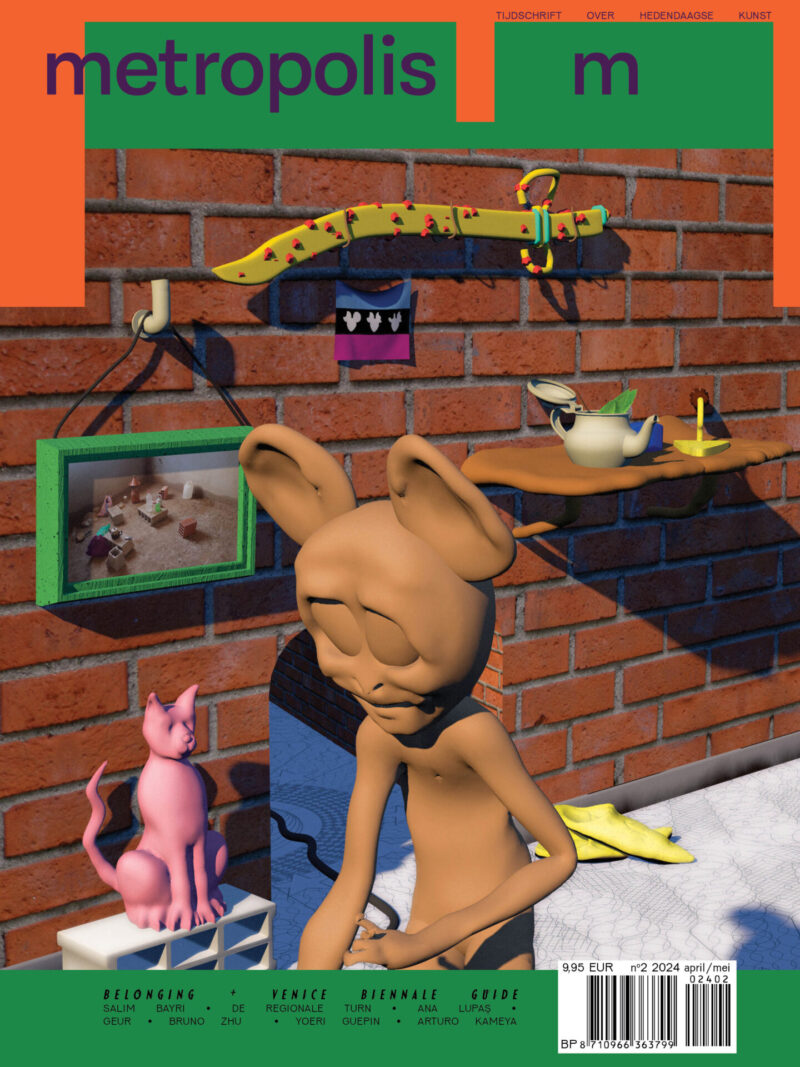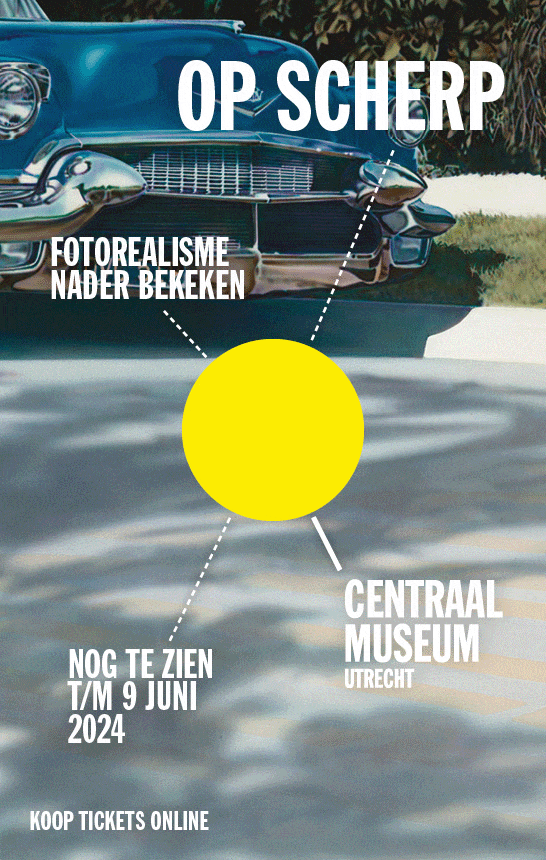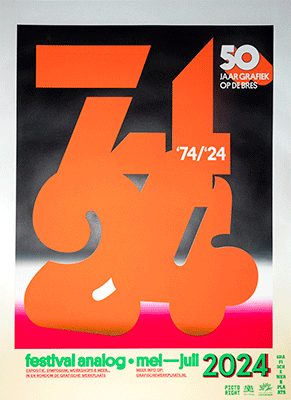
Overview CAPE X UTRECHT at AG Utrecht, including images by Farren van Wyk
Geen punt – No Healing Without Repair at The Black Archives & CAPE X UTRECHT
In 2022, outgoing Dutch Prime Minister Mark Rutte apologised for the Dutch state’s role in slavery, saying that ‘today we put a comma to this history, not a full stop.’ The Black Archives’ Geen Punt is a campaign calling for the public’s opinion on how the Netherlands can offer more than just spoken apologies. What restorative actions could follow the comma? To find out, Evie Evans visits the exhibition ‘No Healing Without Repair’ at The Black Archives, which since a week has been expanded with CAPE X UTRECHT (co-curator Nancy Jouwe) at AG, Ruimte voor nieuwe kunst en media in Utrecht.
Travelling across Amsterdam, you may have already seen the posters. A white comma standing out against a black background. ‘Geen punt.’ This statement comes from a speech made by former Dutch Prime Minister Mark Rutte in 2022[1] in which he apologised for the Dutch state’s role in slavery. In reference to the Year of Commemoration for Slavery[2] in the Netherlands, Rutte explained that the history of slavery and its impact up until today will come to light, therefore ‘We zetten vandaag een komma, geen punt’ or ‘today we put a comma to this history, not a full stop.’ This quote became the favoured soundbite for news outlets and on social media, used as a way to succinctly summarise this important moment of recognition by the state. The Year of Commemoration 2023-2024, marking 150 years since the legal abolition of slavery in the Netherlands, does not mark an end to a longer story of racism and discrimination. The phrase ‘geen punt’ was in fact first said by artist Serana Angelista in 2019.[3] Angelista used these words to demonstrate the direct connection between histories of slavery and the after effects still felt today; the comma is one of many in a long sentence of colonial crimes committed by western countries.
The Black Archives’ Geen Punt is a new campaign calling for the public’s opinion on how the Netherlands can offer more than just spoken apologies. What restorative actions could follow the comma? People can submit responses through an online survey or in person at The Black Archives itself. The campaign is part and parcel to the exhibition Geen Heling Zonder Herstel: 150 jaar afschaffing van de slavernij or ‘No Healing without Repair: 150 years abolition of slavery.’ Geen Heling Zonder Herstel commemorates both the year 1863 when slavery was legally abolished in Suriname (and other Dutch colonies) and 1873 when enslaved people were free in practice. Many were forced to work another 10 years of ‘state supervision’[4] so that plantations owners could be compensated by the government for their lost income without slave labour.
As the title suggests, the exhibition focuses on how we can transform our knowledge about our history into restorative actions. The exhibition starts in a bright white room on the Zeeburgerdijk containing only an Apinti drum, a part of the Afro-Surinamese religion Winti. The drum is a symbol of culture and tradition carried by enslaved people from Africa to new colonies, a sign of continued resistance bathed in the rare but bright sunlight of Amsterdam on the day I visited The Black Archives. The presentation then moves through a dimmer corridor that opens to a library-type space with book-lined walls interspersed with video, text, archival objects and a large white typeface with dates indicating moments and stories specific to the Dutch context within the vast history of the abolition of slavery.

Geen Punt campaign, courtesy The Black Archives
The exhibition is comprised of four main themes. Resistance and Marronage, Abolition of Slavery, Examples of Repair and Repair and Healing – each with special mentions of famous figures or short stories that emerge physically from the archive. Information plaques stand upright on the bookcases and archival prints lie amongst the titles on the shelves. For example, within Resistance and Marronage there is a section for The Tula Revolt in 1795, an uprising on the Knip plantation on Curaçao. In Abolition of Slavery, a special mention is given to Perez Jong Loy, a researcher and activist who created the ‘1873’[5] button in 2011, highlighting that the official abolition of slavery in 1873 was not true for enslaved people in Suriname. Other significant dates include the 1862 parliamentary debate on the Dutch abolition of slavery; 1934, the publication of Anton de Kom’s Wij slaven van Suriname (We Slaves of Suriname); jumping straight to 1993, the first public Keti Koti commemoration on Surinameplein; and 2014, the first Kick Out Zwart Piet protest in Gouda. Visitors are required to connect the dots and fill in the gaps. Various notable Black activists are mentioned: Frederick Douglass, Surinamese Maroons (those who escaped from slavery) Boni, Baron and Joli Coeur, Haitian revolutionist Toussaint Louverture, and contemporary scholars Dr. Glenn Helberg and Tricia Hersey who are working on reparing the generational trauma of slavery.
By working with a timeline and parse objects, this layout gives visitors the laborious task of working within the archive themselves. The exhibition pushes insistences and moments to the forefront which instead highlights the ways in which further elucidation or research could be done. The exhibition is a sort of reading room, a space to gather information that can either aid your arguments and research or further completely alter your standpoint on what reparations or restorations look like to you.
In an attempt to understand more about the aims of the exhibition and The Black Archives itself, I approached members of staff to hear what the exhibition meant to them. The host that day, Evelyn Agyemang, spoke openly and took the time to share her thoughts on the trigger of the exhibition, namely Rutte’s apology. She remarked, ‘The apology was symbolic, but it wasn’t in vain. Since it was top-down, I hope it inspires people to ask the question ‘why is this apology taking place now?’ and give people the power to define it as something else.’ That something else, we discussed, was accountability, responsibility and an understanding that further action is required. When I asked what her opinion of the exhibition was Evelyn explained, ‘I’m glad an exhibition like this exists, and I think it gives more insight into why we must begin a healing journey.’ For her, repair and healing should come in a social form, through education, or a greater focus on the communities still affected by histories of slavery and racism.
Evelyn pointed out the timeline in the exhibition, saying she found value and hope in the resistance, activism and advocacy that perseveres year after year. Activist groups in the Netherlands have been campaigning for apologies for many years, even at a time when asking for state apologies was considered radical or unrealistic. We now stand at a moment when apologies are just the beginning of a longer journey.
Nikita Krouwel, a researcher at The Black Archives, delved into the conceptual approach of the exhibition. She clarified, ‘This exhibition is a response to the apology but coming from the frame of resistance and talking about the practical side of abolition without centring white politicians.’ The exhibition gives the long overdue spotlight to Black voices such as activists Anton de Kom and Perez Jong Loz. ‘Specific to the Dutch context there has been a long fight for the official recognition of slavery’, Nikita said, going on to explain why this makes it even more important to move further than the apology and consider what other forms repair can take. For Nikita, financial compensation is a starting point, but is not enough for healing. ‘For me it’s about programmes, the repatriation of objects, working with communities, considering rest as a form of resistance and allowing people to heal politically, socially, culturally and psychologically.’

Exhibition overview of 'No Healing Without Repair' at The Black Archives. Photo: Ruby Cruden, courtesy The Black Archives

Exhibition overview of 'No Healing Without Repair' at The Black Archives. Photo: Ruby Cruden, courtesy The Black Archives
She acknowledges that the exhibition is a conversation starter. ‘We don’t know what the best way is ourselves. We hope people can come here to get information and begin reflecting on the history of slavery and how we can move forward into the future.’ The exhibition appears to act as a form of research for The Black Archives, supplementing the Geen Punt surveys. By engaging with the wider public it attempts to remove the pressure and responsibility on Black people to call for and create their own solutions and repair. The exhibition succeeds in its presentation of ways in which states or organisations have already worked towards repatriation or restitution – hitting back against any nay-sayers who think it’s impossible. This includes both recent examples and reparation payments from the past, such as the German state paying Holocaust survivors and their children approximately $86 billion between 1945 and 2018.[6] The 1873 button and even Geen Punt are examples of organisations calling for recognition of state violence and action to be able to heal from it.
Geen punt returns at the end of the exhibition with a large comma standing like a sculpture within the space. It functions as a kind of wind-down ritual; Visitors are offered sources of further reading and can add their own responses to the exhibition and the campaign, ‘Wat bekent herstel voor jou?’ or ‘What does repair mean to you?’. My visit to the exhibition coincided with a double booking of tours, with groups chatting simultaneously in Dutch and English, bringing life to the space and emphasising the importance of discussion. Full of questions and conversations, there was a hum of energy within the space. Owing to the fact that it is a working archive rather than a presentation space, the exhibition is one that requires activation. The text at the end of the exhibition, during this moment of reflection, reads ‘We want to emphasize that you don’t have to do anything. Just by visiting the archive, you become a part of history and contribute to the process of healing. What does healing mean to you?’ In a rare personal moment, I fully immersed myself in the winding down and reenergising ritual at the end of exhibition, taking time to sit with my thoughts and add my own response to the wall.
The choice to align the exhibition with the Geen punt campaign appears at first to be a puzzling one. It could simply be a PR stunt, a well-made design for t-shirts and posters. Why not keep the same name for the exhibition? As explained by Nikita, the exhibition moves beyond Rutte’s statement and centres Black history and Black voices instead. It then feels like the right decision to separate the two quotes and narratives presented by Geen Punt and Geen Heling Zonder Herstel. Though they both take the Year of Commemoration and the government’s response as a starting point, the campaign could be a longer form of research. The full stop doesn’t just refer to how the Netherlands thinks about, or presents their history of slavery, but most significantly, the conversations still occurring around it. Geen Punt can continue beyond 2024, beyond the exhibition, to continue the call for further change. The inclusion of Geen Punt in the exhibition creates a tangible gesture towards the future.

Visitor of 'No Healing Without Repair' at The Black Archives. Photo: Ruby Cruden, courtesy The Black Archives
Don’t go to The Black Archives expecting all your questions answered. Geen Heling Zonder Herstel is a starting point. It’s a meeting place, a reading room and a critical place in Amsterdam to ask questions and actively look for answers. Sometimes it can be frustrating when exhibitions don’t conclude their narratives – I for one want to know how institutions position themselves, what they have to say and why. But the exhibition – though it could be better defined as a presentation – works best when you expect no conclusions and instead really interact and engage with the demanding content.
Contrary to their own claim that visitors ‘don’t have to do anything’, The Black Archives push visitors to think and contribute to a vital conversation. Healing and repair are communal activities, they require self-determination and recognition, but they are processes that cannot be done alone. This conversation is far from over, it begins again after the comma.

Campaign material Geen punt, CAPE X UTRECHT at AG Utrecht

Poem A Litany for homegoing by Toni Stuart, Overview CAPE X UTRECHT at AG Utrecht

Books from the library, CAPE X UTRECHT at AG Utrecht
EXTRA
HKU fellow Nancy Jouwe & The Black Archives present: hidden histories of slavery and its afterlives
The exhibition CAPE X UTRECHT dives into the relationship between the Cape colony and Utrecht. When the Dutch government and the King recently apologized for the Dutch involvement in slavery, South Africa was not mentioned. Who remembers the history of Indian Ocean slavery? How does this history affect people in current-day South Africa? And why is this history largely forgotten in the Netherlands?
For thousands of years, |xam, Khoekhoe, and many other peoples lived in Southern Africa. From 1652, the Dutch East India Company (VOC) established a colonial settlement in the Cape, which by 1658 relied completely on an inhumane system of slavery, one that also linked Utrecht to the Cape. This history laid the foundation for the cruel system of apartheid, which is a Dutch word.
No Healing Without Repair: 150 years of abolition of slavery, The Black Archives, Amsterdam 8.7 – 16.12.2023 Info
CAPE X UTRECHT hidden histories of Slavery & its afterlives, AG, Ruimte voor nieuwe kunst en media, Utrecht 7.10 – 4.11.2023 Info
CAPE X UTRECHT is a collaborative project of HKU fellow Nancy Jouwe and The Black Archives. The exhibition features unique archival material and art works by Jasper Albinus, Diana Ferrus, Neo Muyanga, Shishani Vranckx, Judith Westerveld, alumna HKU Photography Farren van Wyk, and Carine Zaayman.
On Saturday 21.10 11.00 – 15.00 h: Conference in collaboration with CASCO at Het Huis, Utrecht 16.00 uur: Guided tour through the exhibition with Nancy Jouwe.
Notes
[1] De Rijksoverheid voor Nederland. ‘Toespraak van Minister-President Mark Rutte over Het Slavernijverleden – Toespraak – Rijksoverheid.nl’
[2] De Rijksoverheid voor Nederland. ‘Herdenkingsjaar Slavernijverleden – Discriminatie En Racisme – Rijksoverheid.nl’
[3] Eggeraat, Amarens. ‘De Beste Zin Uit de Historische Speech van Rutte Is Niet Door Hem Bedacht.’ Vice, 21 Dec. 2022
[4] The Black Archives. Exhibition Guide – No Healing without Repair: 150 Years Abolition of Slavery . The Black Archives, New Urban Collective, July 2023
[5] Imagine IC. ‘Perez Jong Loy.’ Imagine IC, 2018
[6] The Black Archives. Exhibition Guide – No Healing without Repair: 150 Years Abolition of Slavery . The Black Archives, New Urban Collective, July 2023
Evie Evans
is a writer and researcher working around how coloniality occupies our past, present and future





















